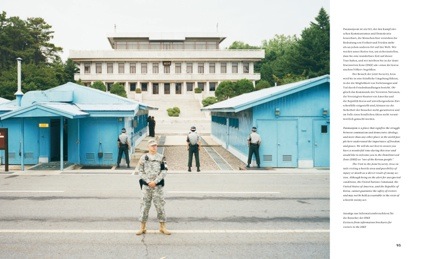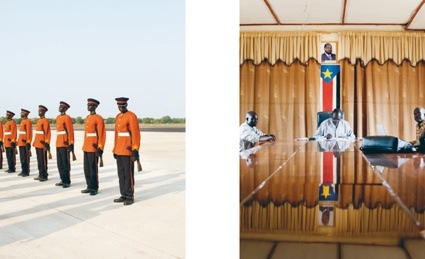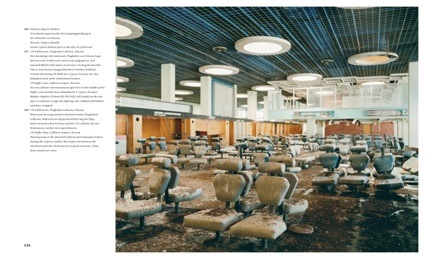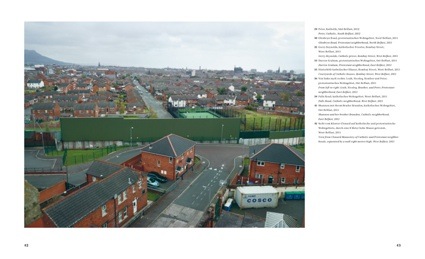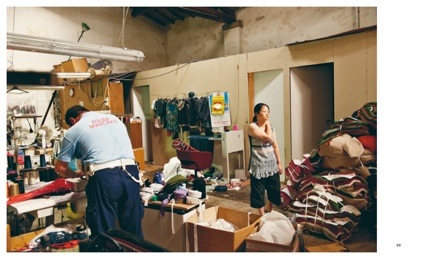Über Grenzen. On Borders, photographs by Ostkreuz – Agentur der Fotografen. Texts by Andrea Böhm, Wolfgang Büscher, Fabian Dietrich, Anna-Christina Hartmann and Marcus Jauer. Graphic design by Jan Spading.
Available on amazon UK, i couldn’t find it on amazon USA.)
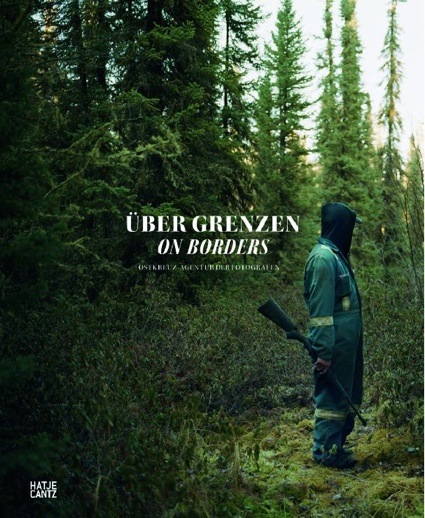
Publisher Hatje Cantz writes: They offer protection, lead to war, limit freedom, or make it possible; they have always been there and they will continue to exist: borders. Hardly anything else is as socially ambivalent, as timeless, and simultaneously as extremely relevant. The Ostkreuz agency was founded when what was probably the most important border in the history of Germany–the Berlin Wall–disappeared. Two decades later, the agency’s photographers set out on a search for today’s frontiers. Their pictures tell of discovering a state identity in South Sudan; they portray groups of indigenous peoples battling for their land in Canada and gay people in Palestine seeking exile in the enemy country of Israel. The focus is always on people: how do boundaries influence their everyday lives, and how do they shape their lives along those that surround them?
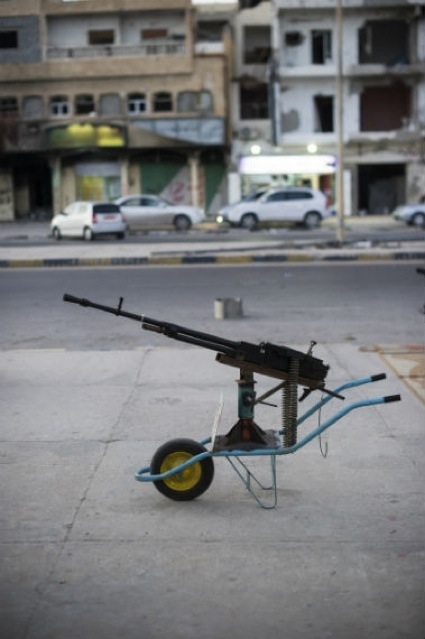 Maurice Weiss, Libya, Misrata, war museum, handmade construction, autumn 2011. From the series “Arabian Autumn”. © Maurice Weiss / OSTKREUZ
Maurice Weiss, Libya, Misrata, war museum, handmade construction, autumn 2011. From the series “Arabian Autumn”. © Maurice Weiss / OSTKREUZ
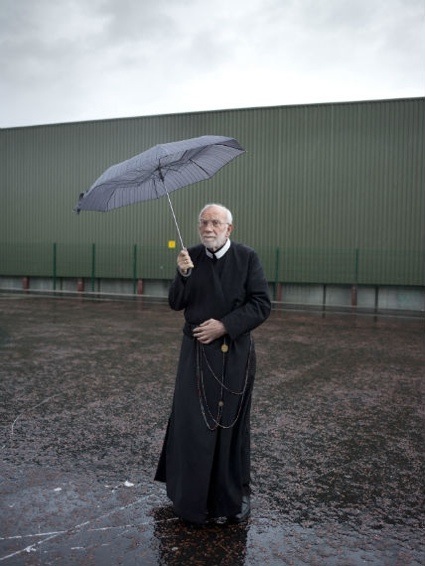 Anne Schönharting, Gerry Reynolds, Catholic Priest, Bombay Street, West Belfast, 2011. © Anne Schönharting / OSTKREUZ
Anne Schönharting, Gerry Reynolds, Catholic Priest, Bombay Street, West Belfast, 2011. © Anne Schönharting / OSTKREUZ
This book is about conflicts, misunderstandings, distrust, isolation, greed, fear, privileges and control. Über Grenzen. On Borders contains the kind of images you see in newspapers and press photo exhibitions. This time however they come with the personal story of the photographer: the doubts, the dangers encountered (one of them was kidnapped on the job), the challenges, the disappointments. I like the way photographers write. Whether they do it in the form of a diary or of a more traditional reportage article, whether they attempt to stay neutral or cannot hide their involvement in the issue they are covering, photographers are factual, informative, and efficient. As someone whose job consists mostly in writing, i can only feel envy. I should have undertaken a formation in photography instead of philology (what was i thinking the day i enrolled in philologie classique?)
As the description suggests, Über Grenzen. On Borders takes you all around the world. The stories which are closer from home are obviously the ones that hurt the most: the extreme lengths the European Union goes to in order to keep at bay anyone who doesn’t have the right passport; the communities, such as the Roma, who are vilified and driven out of their houses.
Here are some of photo reports presented in the book:
In A State Emerges, Espen Eichhöfer documents the first steps of a new nation: South Sudan. Houses might be ramshackle, government buildings might be hosted by temporary structures but the government and citizens rest their hopes on oil. About eighty percent of the oil deposits in all of Sudan are in their territory.
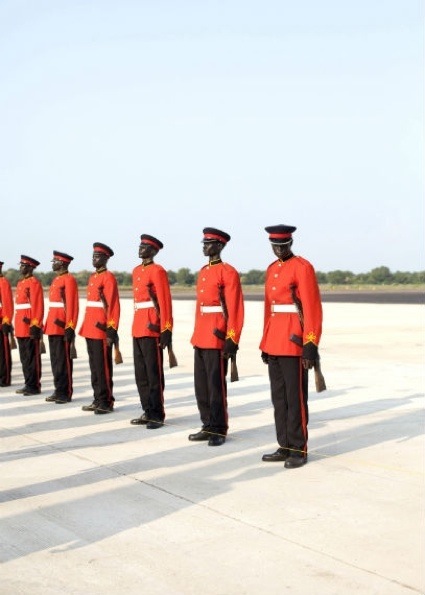 Espen Eichhöfer, National garde, Airport, Juba, South Sudan, 2012. © Espen Eichhöfer / OSTKREUZ
Espen Eichhöfer, National garde, Airport, Juba, South Sudan, 2012. © Espen Eichhöfer / OSTKREUZ
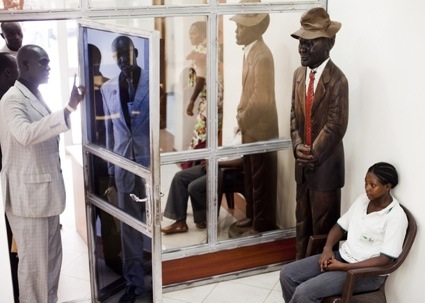 Espen Eichhöfer, Ministry of Information, Juba, South Sudan, 2012. © Espen Eichhöfer / OSTKREUZ
Espen Eichhöfer, Ministry of Information, Juba, South Sudan, 2012. © Espen Eichhöfer / OSTKREUZ
The Green Line looks at the Republic of Cyprus which, officially, is still undivided. Since the invasion by Turkish troops in 1974, however, the government only controls two-thirds of the national territory. The United Nations has guarded a buffer zone for almost forty years along the old ceasefire line. It runs right through the capital city.
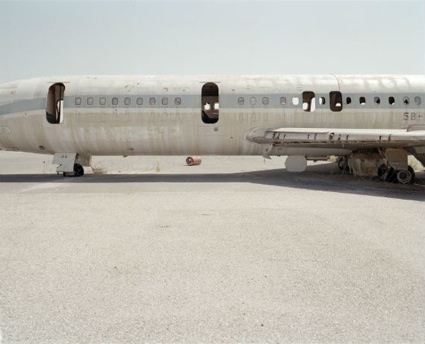 Lefkosia Airport, Nicosia, Nicosia’s former international airport lies in the middle of the buffer zone and has been abandoned. A Cyprus Airways Hawker Siddeley Trident (ID 5B-DAB) still stands on the run way; it could not escape the fighting, was riddled with bullets, and later stripped, 2012, Cypress © / Ostkreuz / LUZphoto
Lefkosia Airport, Nicosia, Nicosia’s former international airport lies in the middle of the buffer zone and has been abandoned. A Cyprus Airways Hawker Siddeley Trident (ID 5B-DAB) still stands on the run way; it could not escape the fighting, was riddled with bullets, and later stripped, 2012, Cypress © / Ostkreuz / LUZphoto
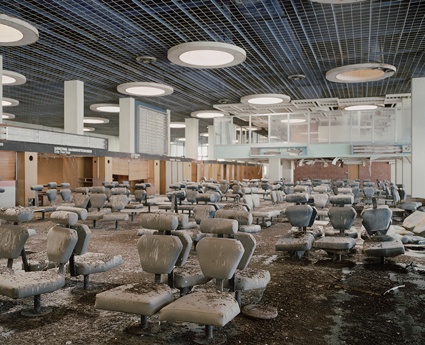 Heinrich Völkel, UN #UN Buffer Zone, Lefkosia Airport, Nicosia, Waiting room at the deserted Lefkosia International Airport. During the Cypress conflict the airport lay between the two fronts and the UN declared it a protected zone. It has been closed ever since, 2012 © Heinrich Völkel / OSTKREUZ
Heinrich Völkel, UN #UN Buffer Zone, Lefkosia Airport, Nicosia, Waiting room at the deserted Lefkosia International Airport. During the Cypress conflict the airport lay between the two fronts and the UN declared it a protected zone. It has been closed ever since, 2012 © Heinrich Völkel / OSTKREUZ
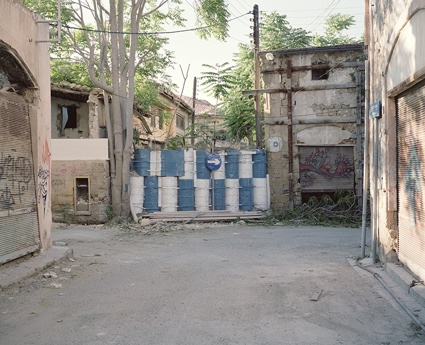 Cypress (South), Barricade in the Greek national colors at the entrance to the buffer zone in the old city of Nicosia, 2012, Cypress © / Ostkreuz / LUZphoto
Cypress (South), Barricade in the Greek national colors at the entrance to the buffer zone in the old city of Nicosia, 2012, Cypress © / Ostkreuz / LUZphoto
Members of the Lubicon Cree (in today’s Canada) have never surrendered and relinquished their territory. But oil and gas development on or near their land is threatening their way of life, their culture, and their health.
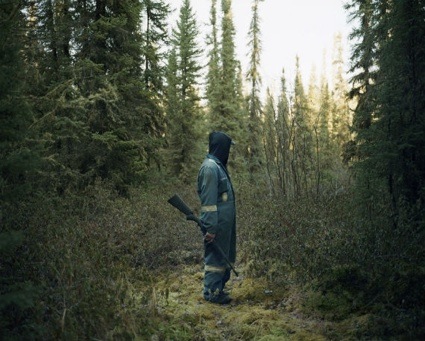 Dawin Meckel, Vern Hunting Pigeons, Canada, 2012. © Dawin Meckel / OSTKREUZ
Dawin Meckel, Vern Hunting Pigeons, Canada, 2012. © Dawin Meckel / OSTKREUZ
![]() Dawin Meckel, Waterpump on the Lubicon Cree territory, Little Buffalo, Alberta, 2011. © Dawin Meckel / OSTKREUZ
Dawin Meckel, Waterpump on the Lubicon Cree territory, Little Buffalo, Alberta, 2011. © Dawin Meckel / OSTKREUZ
Twenty-two years after the fall of the Berlin Wall Ute and Werner Mahler drove along the old border that used to separate East German citizens from the West: a strip of land almost 1400 kilometers long running from the Baltic in the Harz to the foothills of the Thuringian Forest, in Saxony.
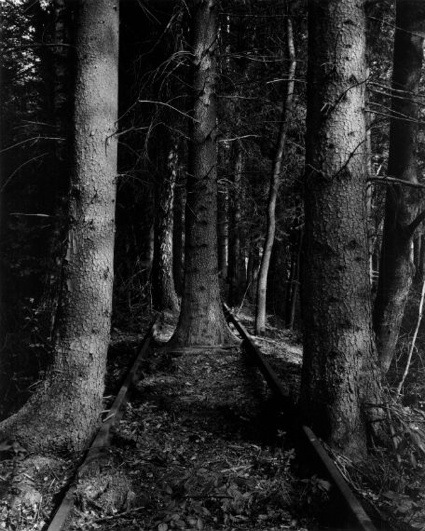 Ute und Werner Mahler, Tettau Railway, Thuringian border, Bavaria, 2012. © Ute und Werner Mahler / OSTKREUZ
Ute und Werner Mahler, Tettau Railway, Thuringian border, Bavaria, 2012. © Ute und Werner Mahler / OSTKREUZ
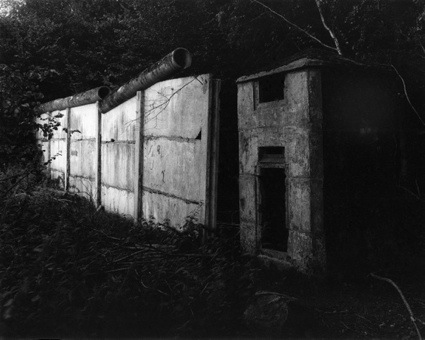 Ute und Werner Mahler, Wall near Waddekath, Sachsen-Anhalt border, Lower Saxony, 2012
Ute und Werner Mahler, Wall near Waddekath, Sachsen-Anhalt border, Lower Saxony, 2012
Most illegal immigrants enter the European Union via the route that goes from Turkey to Greece. And the instruments put forward to keep them out are getting increasingly sophisticated. Mostly through the Frontex Agency, a EU border patrol that upgrades technology along the edges of Europe. In the future, they plan to use robots and drones.
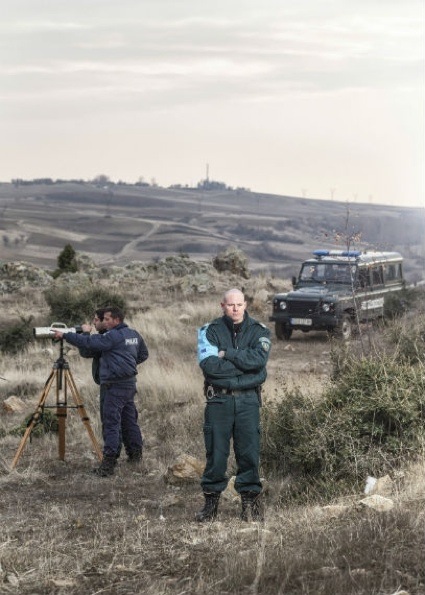 Julian Roeder, Greek-Bulgarian Frontex patrol at the European border between Greece and Turkey in the Evros region, January 2012. © Julian Roeder / OSTKREUZ
Julian Roeder, Greek-Bulgarian Frontex patrol at the European border between Greece and Turkey in the Evros region, January 2012. © Julian Roeder / OSTKREUZ
A four-kilometer-wide strip has separated North and South Korea since 1953. Soldiers there are still on alert, and every once in a while a shot is fired. Nevertheless, the South Korean tourist office still lures tourists to the last existing border left over from the Cold War, which was a prohibited zone for a long time.
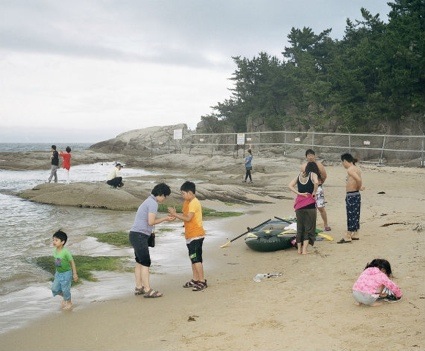 Jörg Brüggemann, Families collecting shellfish. The peninsular is blocked to protect the main land from North Korean spies. Songjiho Beach, South Korea, June 2012. © Jörg Brüggemann / OSTKREUZ
Jörg Brüggemann, Families collecting shellfish. The peninsular is blocked to protect the main land from North Korean spies. Songjiho Beach, South Korea, June 2012. © Jörg Brüggemann / OSTKREUZ
In Prato (Tuscany), the “pronto moda” industry churns out cheap clothes that imitate current trends. They are made by Chinese residents (many of whom entered the country illegally) who produce clothing “made in Italy,” under the worst working conditions.
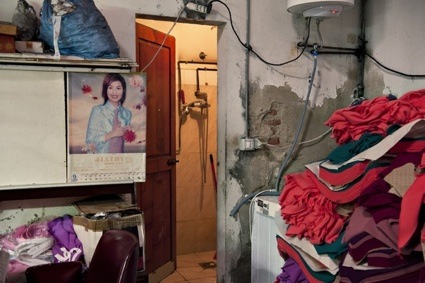 Jordis Antonia Schlösser, In a sweatshop: Chinese immigrants sleep, eat and work here, Prato, 2012. © Jordis Schlösser / OSTKREUZ
Jordis Antonia Schlösser, In a sweatshop: Chinese immigrants sleep, eat and work here, Prato, 2012. © Jordis Schlösser / OSTKREUZ
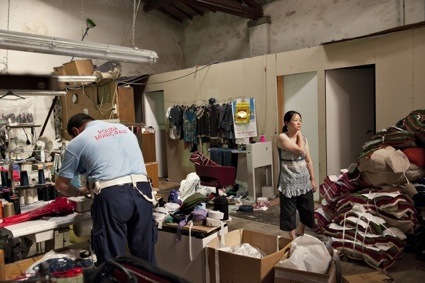 Jordis Antonia Schlösser, Police raid, called a blitz, in a Chinese sweatshop, Prato, 2012. © Jordis Schlösser / OSTKREUZ
Jordis Antonia Schlösser, Police raid, called a blitz, in a Chinese sweatshop, Prato, 2012. © Jordis Schlösser / OSTKREUZ
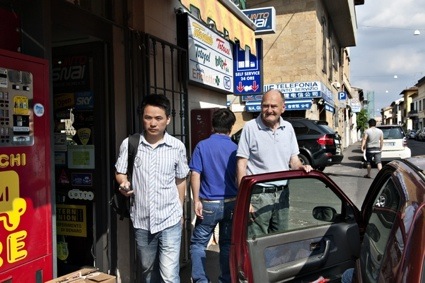 Jordis Antonia Schlösser, Via Pistoiese, Mainstreet, Prato, Chinatown, 2012 © Jordis Schlösser / OSTKREUZ
Jordis Antonia Schlösser, Via Pistoiese, Mainstreet, Prato, Chinatown, 2012 © Jordis Schlösser / OSTKREUZ
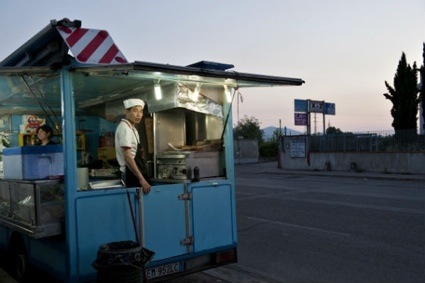 Jordis Schlösser, Food truck in Prato’s industrial zone: open evenings to feed workers on the night shift, Prato, 2012 © Jordis Schlösser / OSTKREUZ
Jordis Schlösser, Food truck in Prato’s industrial zone: open evenings to feed workers on the night shift, Prato, 2012 © Jordis Schlösser / OSTKREUZ
Views inside the book:
